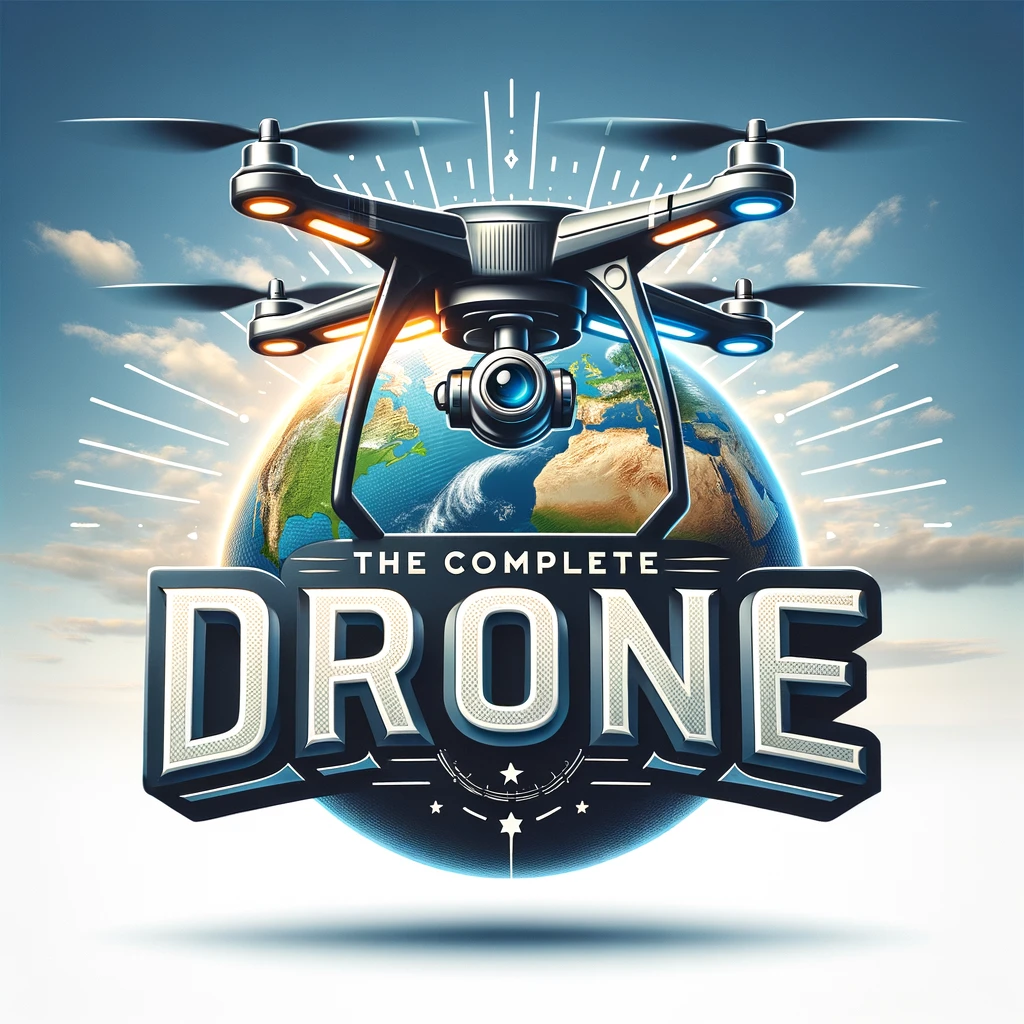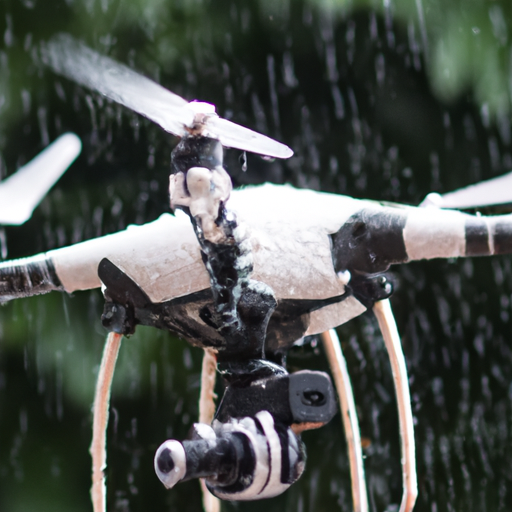Imagine being able to effortlessly use a drone for various surveying tasks, even without any prior experience or training. You may wonder if these unmanned aerial vehicles can withstand the unpredictable nature of rain. In this article, we explore the question of whether drones can successfully fly in rain, as well as share some useful tips for beginners looking to utilize them for simple surveying tasks. Get ready to discover the exciting possibilities that drones present, rain or shine!
Can Drones Fly in Rain?
Drones have become increasingly popular in recent years, with their use spanning across a wide range of industries and activities. One question that often arises is whether drones can fly in rain. Rainy conditions can pose certain challenges and risks to drone flight, but with advancements in technology, there are now drones available that are specifically designed to withstand such conditions. In this article, we will explore the construction and components of drones, the effects of rain on their performance, the challenges faced in rainy conditions, and the precautions and best practices to consider when flying drones in the rain.
Understanding Drone Construction and Components
Before delving into the topic of flying drones in rain, it is important to have a basic understanding of the construction and components of these unmanned aerial vehicles. Drones typically consist of a frame, motors, propellers, a flight controller, a battery, and various sensors. The frame provides support and structure to the drone, while the motors and propellers enable it to achieve lift and propulsion. The flight controller is the brain of the drone, responsible for processing data from the sensors and controlling its movements. The battery powers the drone, and the sensors provide essential information such as altitude, orientation, and stability.
Effects of Rain on Drone Performance
Rain can have several adverse effects on drone performance. The most obvious concern is water damage. Since drones are electronic devices, exposure to water can lead to malfunctions or even complete failure. Raindrops can interfere with the operation of the motors and propellers, causing them to become less efficient and potentially leading to instability in flight. Additionally, the sensors on the drone may be affected by rain, resulting in inaccurate readings and compromised control. It is crucial to consider these effects in order to determine whether it is safe and feasible to fly a drone in rainy conditions.
Challenges Faced by Drones in Rainy Conditions
Flying a drone in rain presents numerous challenges that could hinder its performance and jeopardize its safety. The weight of the rainwater can increase the overall load on the drone, potentially putting strain on the motors and reducing battery life. The moisture in the air can also affect the visibility of the drone’s camera, making it difficult to capture clear and usable footage. Furthermore, controlling the drone becomes more challenging due to the reduced grip and traction between the propellers and the air caused by the wet conditions. These challenges need to be carefully considered to ensure a successful and safe flight.
Waterproof and Water-Resistant Drones
To address the concerns associated with flying drones in rain, manufacturers have developed waterproof and water-resistant drones. Waterproof drones are specifically designed to be completely submersible in water, offering the highest level of protection against rain. On the other hand, water-resistant drones are constructed with materials and coatings that provide a certain degree of protection against water damage. While these drones may not be fully waterproof, they can withstand light rain and damp conditions without significant issues. Investing in a waterproof or water-resistant drone can provide peace of mind and open up opportunities for flying in rainy conditions.
Drones’ Flight Controllers and Moisture Resistance
The flight controller is a critical component of a drone, responsible for stabilizing and controlling its movements. Therefore, it is essential for the flight controller to have adequate moisture resistance to ensure reliable operation in rainy conditions. Many drone manufacturers take precautions to protect the flight controller from moisture by using waterproof or water-resistant materials, as well as seals or coatings. Additionally, some drones are equipped with moisture sensors that can detect and alert the user of any potential damage caused by rain or excessive moisture. These advancements in flight controller technology play a vital role in enabling drones to fly safely in rain.
Safety Risks Involved in Flying Drones in Rain
Flying drones in rain comes with certain safety risks that should not be overlooked. One of the main concerns is the potential for electrical shorts or failure due to exposure to water. This can lead to a loss of control or an unexpected crash, putting both the drone and people in the vicinity at risk. Reduced visibility caused by rain can also make it challenging to navigate or avoid obstacles, increasing the chances of collisions. Furthermore, the loss or damage of the drone during flight in rainy conditions may result in financial loss. Proper precautions and adherence to safety guidelines are crucial to minimize these risks.
Tips for Flying Drones in Light Rain
If you decide to fly your drone in light rain, there are certain tips and considerations that can help ensure a successful and safe flight. Firstly, it is recommended to check the weather forecast and avoid flying in heavy rain or thunderstorms, as these conditions are significantly more dangerous. Before takeoff, inspect your drone for any signs of damage or wear that could be exacerbated by rain. Ensure that the drone’s battery is fully charged, as flying in rain can reduce battery life. Additionally, fly at a lower altitude to minimize the impact of wind and rain, and keep the flight duration shorter to reduce exposure to moisture. Lastly, always have a backup plan and be prepared to land the drone immediately if the weather conditions worsen.
Precautions to Take When Flying Drones in Rain
When flying a drone in rain, it is essential to take specific precautions to protect both the drone and those around you. Firstly, make sure to dry the drone thoroughly after each flight in wet conditions, paying special attention to sensitive areas such as the motors, flight controller, and battery compartment. Use a cloth or towel to remove any moisture and allow the drone to air dry completely before storing it. Additionally, consider using a waterproof or water-resistant carrying case to transport the drone, providing an extra layer of protection against rain. It is also advisable to invest in a quality waterproof housing or cover for your drone’s camera, ensuring that you can capture clear footage even in wet conditions.
Best Practices for Protecting Drones from Rain
To protect your drone from rain and ensure longevity, it is important to follow some best practices. Avoid flying your drone in rain unless it is specifically designed and rated for such conditions. Regularly check for any signs of damage or wear on your drone’s components and replace or repair as necessary. Store your drone in a dry and temperature-controlled environment, away from moisture and extreme temperatures. Consider using a drone cover or umbrella during takeoff and landing to shield the drone from direct exposure to rain. Finally, familiarize yourself with the specific instructions and recommendations provided by the drone manufacturer to ensure optimal performance and durability in rainy conditions.
Future Technological Advancements in Rain-Resistant Drones
As the demand for rain-resistant drones continues to grow, researchers and manufacturers are actively working on advancements in this field. One area of focus is the development of more sophisticated moisture-resistant materials and coatings that can provide even better protection against rain. Additionally, improvements in drone propulsion systems may enable better performance in wet conditions by enhancing the grip and stability of the drone. Furthermore, advancements in drone sensors and artificial intelligence may enable drones to detect and navigate around raindrops or operate in rainier conditions with increased accuracy. These future technological advancements hold great promise for the future of rain-resistant drones and the opportunities they can unlock.
In conclusion, while flying drones in rain poses certain challenges and risks, there are now drones available that are specifically designed to withstand wet conditions. Understanding the construction and components of drones, the effects of rain on their performance, and the precautions and best practices to follow is crucial for safe and successful flights. By investing in a waterproof or water-resistant drone, taking necessary precautions, and staying informed about future technological advancements, you can confidently explore the possibilities of drone flight even in rainy weather. Remember, safety should always be the top priority when flying drones under any conditions, including rain.

